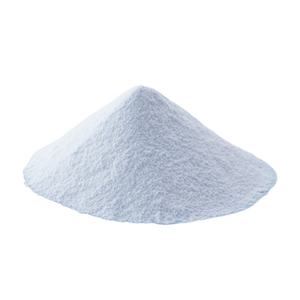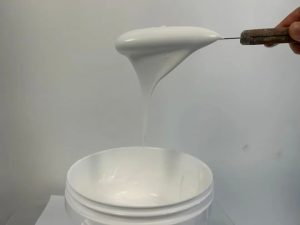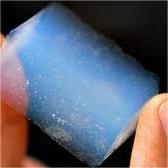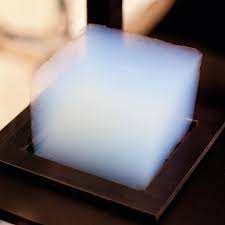Professional industry ceramic supplier, silicon nitride, silicon carbide, aluminum nitride and any other kinds of ceramics.
1. Introduction
When it comes to handling extreme heat, few materials stand up like the silicon carbide crucible. Renowned for its exceptional thermal conductivity, chemical inertness, and mechanical strength at high temperatures, this advanced ceramic is a go-to choice in foundries, laboratories, and even niche culinary applications. Whether you’re melting aluminum, casting precious metals, or exploring high-purity material synthesis, understanding what makes silicon carbide crucibles so reliable is essential.

2. What Is a Silicon Carbide Crucible?
A silicon carbide crucible is a container made from silicon carbide (SiC)—a compound of silicon and carbon—engineered to withstand temperatures exceeding 1600°C (2912°F). Unlike traditional clay-graphite crucibles, SiC crucibles offer superior resistance to thermal shock, oxidation, and corrosion from molten metals and slags.
- Made from high-purity silicon carbide powder sintered under controlled conditions
- Available in various forms: bonded, reaction-bonded (RBSiC), or nitride-bonded
- Often reinforced with additives like silicon nitride for enhanced durability
3. Key Properties That Set Silicon Carbide Apart
Silicon carbide stands out in the world of advanced ceramics due to its unmatched combination of hardness, thermal stability, and electrical properties. Its covalent bonding structure gives it a Mohs hardness of around 9.5—second only to diamond.
Compared to alternatives like alumina (Al2O3) or zirconia (ZrO2), silicon carbide offers faster heat transfer and better resistance to thermal cycling. This makes it ideal not just for crucibles but also for components like silicon carbide burner nozzles, silicon carbide brick linings, and silicon carbide thermocouple protection tubes.

4. Silicon Carbide vs. Other Advanced Ceramics
4.1 Boron Carbide vs Silicon Carbide
While both are ultra-hard ceramics, boron carbide (B4C) excels in ballistic armor and neutron absorption, whereas silicon carbide dominates in high-temperature structural applications. Boron carbide is more brittle and expensive, making SiC the preferred choice for reusable crucibles and furnace parts.
4.2 Silicon Nitride Comparison
Silicon nitride (Si3N4) is another high-performance ceramic known for its fracture toughness and thermal shock resistance. Though silicon nitride crucible factories do exist, Si3N4 is less conductive than SiC and typically used in bearings, cutting tools, or custom silicon nitride heat shields—not primary melting vessels. However, hybrid designs sometimes combine both materials for specialized performance.
5. Industrial and Niche Applications Beyond Crucibles

The versatility of silicon carbide extends far beyond laboratory or foundry crucibles. Engineers and designers leverage its properties in diverse forms:
- RBSiC silicon carbide tile blocks for kiln furniture
- Silicon carbide ceramic columns and rings for filtration and support structures
- Silicon carbide ceramic pipes and tubes for corrosive fluid handling
- Silicon carbide discs and grinding discs for precision machining
Interestingly, consumer products have also embraced this material. You’ll find items like silicon carbide ceramic baking dishes, silicon carbide dinner ceramic plates, and even silicon carbide ceramic butter dishes marketed for their durability and non-reactive surfaces. Brands occasionally reference ‘silicon carbide baking dish Staub’—though true SiC cookware remains rare and often conflated with standard stoneware.
6. Manufacturing and Material Forms
Silicon carbide components are produced through processes like pressureless sintering, hot pressing, or reaction bonding. Reaction-bonded silicon carbide (RBSiC) is especially popular for complex shapes like silicon carbide ceramic tubes for high temperature or porous ceramic filters.
Customization is common: manufacturers produce silicon carbide ceramic casserole dishes with lids, silicon carbide ceramic serving platters, and even handcrafted ceramic plates in black or white variants. Despite marketing claims, most ‘silicon carbide ceramic dinnerware’ contains only trace SiC or uses it as a glaze additive—not as a structural ceramic.
7. Safety, Care, and Common Misconceptions
One frequent concern is whether ceramic cookware is safe. Pure silicon carbide is chemically inert and non-toxic, but consumer-grade ‘SiC’ dishes may include other materials. Always verify composition if using for food.
In industrial settings, proper handling prevents thermal shock—avoid rapid temperature changes. Cleaning requires non-abrasive methods; never use harsh acids on porous SiC surfaces.
8. Conclusion
The silicon carbide crucible remains a cornerstone of high-temperature processing thanks to its robustness, efficiency, and adaptability. While materials like zirconia crucibles or alumina tubes serve specific niches, silicon carbide’s balance of thermal conductivity, strength, and longevity makes it unmatched for demanding applications. As advanced ceramics manufacturing evolves, expect to see even more innovation—from silicon carbide ceramic plumbing pipes to custom-engineered furnace components—solidifying SiC’s role across science, industry, and everyday life.
Our Website founded on October 17, 2012, is a high-tech enterprise committed to the research and development, production, processing, sales and technical services of ceramic relative materials such as Silicon. Our products includes but not limited to Boron Carbide Ceramic Products, Boron Nitride Ceramic Products, Silicon Carbide Ceramic Products, Silicon Nitride Ceramic Products, Zirconium Dioxide Ceramic Products, etc. If you are interested, please feel free to contact us.






